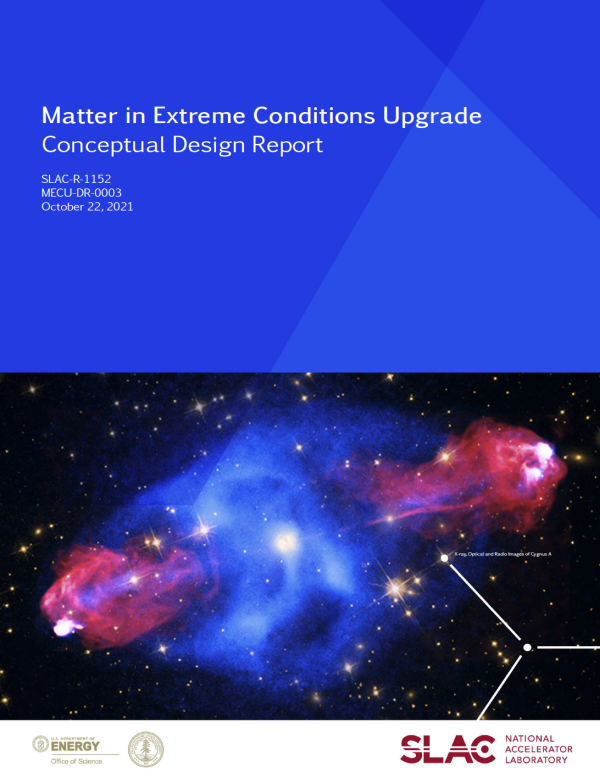MEC-U Science Mission

The LCLS X-ray beam is ideally suited to overcome many experimental challenges in the study of high energy density (HED) plasmas. Its ultrafast pulse, spatial coherence, spectral control, and exceptional peak brightness can allow probing dynamic matter via interactions with low cross-section, small spatial scale, or high energy specificity. Combined with LCLS, even the relatively modest CPA laser and nanosecond compression lasers of MEC have enabled world-class science leading to over 100 publications, with more than 25 appearing in high impact journals. The MEC-U project will vastly expand the range of extreme conditions that can be accessed, opening new avenues of research.
Relativistic plasmas
Plasmas with electrons driven to relativistic speeds by petawatt laser interaction experience conditions that can only be found in some of the most extreme environments in the universe, such as active galactic nuclei and supernova remnants. The complex, ultrafast dynamics of these strongly magnetized plasmas can be studied with unrivaled precision using LCLS, offering insight into the processes behind, e.g., the origin of cosmic rays.
Fundamental state properties in strongly coupled plasmas
Essential to the modeling of astrophysical bodies or inertial confinement fusion processes is the understanding of HED plasma properties. High quality elastic and inelastic scattering measurements using the LCLS beam can provide with unmatched precision dynamic measurements of thermodynamic quantities, structure, viscosity, mix, sound speed, ionization, and thermal diffusivity.
High repetition rate science
The vast phase space of high energy density plasmas has been only sparsely explored by petawatt-class laser systems, most of which have had a very low shot rate. The MEC-U project will provide a 1.5 kW average power petawatt laser in a facility with a target chamber and shielding designed for million-shot experimental campaigns. Much technology development is still needed on the target and targeting side, but there is a major push in the community to explore this frontier, opening new measurement possibilities and the possibility of A.I.-driven explorations of parameter space. A future laser-driven Inertial Fusion Energy power plant is expected to run continuously at a repetition rate similar to the MEC-U laser, so such technology development is critical to the world’s energy future.
Inertial Confinement Fusion ablator studies
Micro-and mesoscale structure can profoundly affect material behavior and performance. Inertial confinement fusion ablators are known to be affected by target quality and a detailed understanding of how instabilities are seeded by such imperfections as nano-voids, chemical inhomogeneity and phase separation is essential to improving current target concepts and moving towards the mass-produced and inexpensive targets needed for viable IFE with high power lasers. The spatial coherence, spectral control, ultrashort pulse, pulse-train capability, and high brightness of LCLS make it ideal for studying the kinetics of instability formation.
Planetary and impact physics
The current MEC has generated many high-profile publications investigating properties of the interior of planets such as Earth and Neptune, as well as the kinetics of meteor impacts. The MEC-U project will provide a shock drive laser with 10x higher energy, allowing study of conditions deeper within the planets, or phenomena developing over longer timescales. The rep rated shock drive laser will have a similar energy to the current MEC but be able to apply the advantages of high repetition rate.
